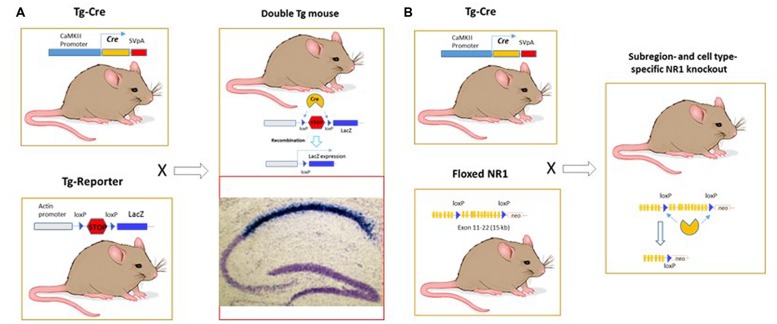FIGURE 2.
Cre-LoxP neurogenetics for achieving region- and cell-type specific analysis of relationships of genes, circuits, and functions in the brain. (A) Strategy to detect the Cre-LoxP recombination in the brain. It required the production of two different transgenic mice: Tg-Cre and Tg-Reporter lines, respectively. These two lines were then crossed to generate the double transgenic mice. CA1-specific recombination was detected after P19 by LacZ method. It is known that CA1 pyramidal cells undergo neurogenesis between E10 and E18 and enter the post-mitotic state by P0. They are well differentiated by P7, with fully established synaptic connections. We have found that Cre-loxP recombination occurs during the middle or end of the third postnatal week in the CA1 pyramidal cells. LacZ in the CA1 pyramidal cells was detected as deep blue color on Nissl stain (in purple-blue) background. (B) Conditional knockout of NR1 gene in a specific cell type and region. The exon 11-21 encoding the entire transmembrane domain and C-terminus were flanked by the loxP (termed floxed) in the introns. The second loxP was followed with the neo cassette gene, which allowed for targeted ES cells selection. Luckily, insertion of loxP sites and the neo gene did not alter NR1 gene expression in the floxed homozygous mice.

